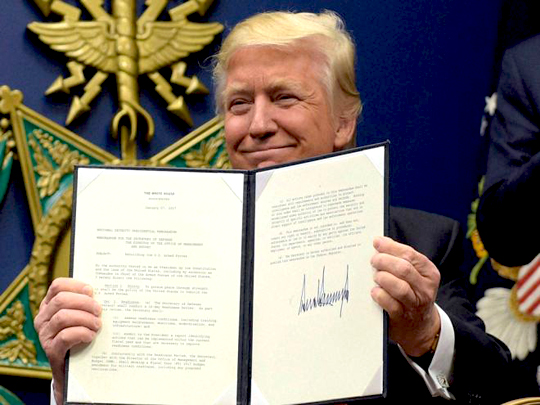Honolulu, Mar 9: Hawaii has become the first state to sue to stop President Donald Trump's revised travel ban.
Attorneys for the state filed the lawsuit yesterday in federal court in Honolulu. The state had previously sued over Trump's initial travel ban, but that lawsuit was put on hold while other cases played out across the country.

Hawaii gave notice Tuesday night that it intended to file an amended lawsuit to cover the new ban, which plans to goes into effect March 16.
The revised executive order bars new visas for people from six predominantly Muslim countries and temporarily shuts down the US refugee programme. It doesn't apply to travelers who already have visas.
Hawaii's lawsuit says the order will harm Hawaii's Muslim population, tourism and foreign students.
"Hawaii is special in that it has always been non-discriminatory in both its history and constitution," said Attorney General Douglas Chin, whose office has also asked for a temporary restraining order against the ban. "Twenty percent of the people are foreign-born, 100,000 are non-citizens and 20 percent of the labor force is foreign-born."
Chin, who noted the state has budgeted about $150,000 for an outside law firm to help with the lawsuit, said people in Hawaii find the idea of a travel ban based on nationality distasteful because they remember when Japanese Americans were sent to internment camps during World War II. Chin said Hawaii was the site of one of these camps.
People in Hawaii know that the fear of newcomers can lead to bad policy, Chin said.
The move came after a federal judge in Honolulu said earlier Wednesday that Hawaii can move forward with the lawsuit.
US District Judge Derrick Watson granted the state's request to continue with the case and set a hearing for March 15 the day before Trump's order is due to go into effect. It bars new visas for people from the six predominantly Muslim countries and temporarily shuts down the US refugee programme. Officials in heavily Democratic Hawaii previously sued to stop Trump's initial ban but that suit was placed on hold amid legal challenges around the country.
The US Department of Justice declined to comment on the pending litigation.
The state will argue at the March 15 hearing that the judge should impose a temporary restraining order preventing the ban from taking effect until the lawsuit has been resolved.
Hawaii's complaint says it is suing to protect its residents, businesses and schools, as well as its "sovereignty against illegal actions of President Donald J. Trump and the federal government."
The order affects people from Iran, Syria, Somalia, Sudan, Yemen and Libya. It does not apply to travelers who already have visas.





Comments
Add new comment